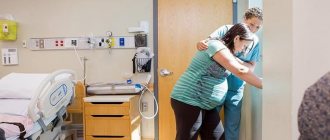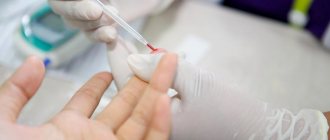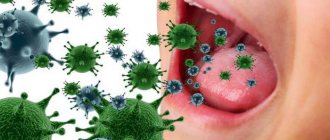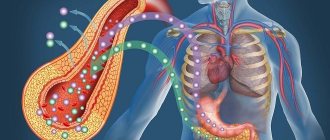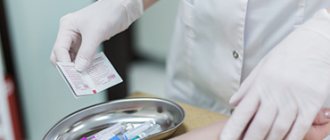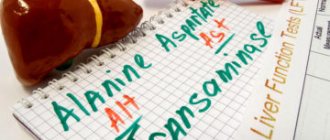For what reasons can a distortion of the result occur?
A biochemical blood test is a diagnostic method that allows one to assess the functioning and condition of all human organs.
Everyone has encountered this procedure. In order for the test to be successful, a person must donate blood from a vein in the morning on an empty stomach.
The nurse tightens the arm in the forearm area with a special tourniquet. Then he pierces the vein with a needle and collects the blood into test tubes. A person has no control over this process, but proper preparation for donating blood for biochemical analysis is of great importance. This is what determines the reliability of the result. The blood will also not clot ahead of schedule.
Why is analysis needed?
Many patients in clinics and hospitals are first sent for a finger prick blood test. In addition, similar research is being carried out in preventive measures. Today, studying samples of so-called capillary blood is the most accessible and at the same time informative method. After all, its results give the doctor the opportunity to determine the condition of the entire body.
Thanks to such laboratory tests, it is possible to establish a more or less accurate blood formula, as well as determine its group and the presence of the Rh protein factor in it. In addition, a general analysis allows you to find out the level of hemoglobin and erythrocyte sedimentation rate.
Standard preparation
The standard preparation process is quite simple; the main thing is to follow all the recommendations of specialists. You can ask the nurse in advance.
The main condition for conducting a biochemistry test is that the patient has an empty stomach. You don't have to stick to the early morning time. This could be in the evening, the main thing is that at least 6 hours have passed since the last meal, preferably 8. Snacking is also undesirable. Snacks include tea, coffee, especially sweet ones. Pure, sugar-free, still water is ideal. You can drink it. If you are going to donate blood for sugar, you should even brush your teeth without using toothpaste; in addition, mouth rinses may also contain sweeteners and other substances that will negatively affect the analysis.
Determination of the blood formula: why is it needed?
Laboratory research allows you to determine the approximate number of formed blood cells, which makes it possible to determine the general condition of the body. After all, it’s no secret that almost any disease entails a change in the blood formula. What exactly do laboratory technicians and doctors pay attention to?
- The number of leukocytes is counted, as well as a differential analysis (the number of basophils, eosinophils, neutrophils, monocytes and lymphocytes is determined). The number of white blood cells increases in the presence of infection and inflammation, and changes in the level of each type of these cells indicate a particular problem.
- In addition, hemoglobin levels and red blood cell counts are measured. For example, a decrease in the number of red blood cells may indicate anemia.
- A platelet count helps determine the presence of some bone marrow diseases and may also indicate a bleeding disorder.
How does food affect results?
The evening before your scheduled blood test, it is best not to eat too much. This will overload the gastrointestinal tract. And if you need to identify diseases in the liver, pancreas, gall bladder, then it is better to stick to the diet for 2-3 days. Moreover, fatty, fried, salty foods, fast food, sauces will have a negative effect on the organs and distort the result.
Fats that a person ate the day before can cause high clotting. Turbid blood serum will become unsuitable for testing.
What is ESR?
During a general blood test, the erythrocyte sedimentation rate is determined. The results of this analysis are not specific - they indicate the presence of certain disorders, but do not provide information about the reasons for their occurrence. The essence of the study is simple - the rate of sedimentation of red blood cells in plasma depends on their ability to aggregate (stick together). Normal ESR is 2–15 mm per hour in women and 1–10 mm per hour in men. A change in the indicator may be an indirect sign of inflammation and some other pathological processes.
What indicators are included in biochemistry?
When performing a biochemical blood test, certain indicators are taken into account. Only a doctor should decipher the result. Independent decryption is not allowed. If a deviation from the norm of any one indicator is detected, this does not necessarily indicate pathology.
The main indicators of blood biochemistry include:
Glucose is the most important source of energy in the body. Carbohydrate compounds are broken down and absorbed in the small intestine. Blood sugar may indicate diabetes. You can also determine how effective the treatment for the disease was. It is important to monitor your glucose levels because it is responsible for energy in the body.
AST and ALT are enzymes that are synthesized in the liver and are indicators of its functioning. Available in liver cells and in small quantities in the blood. If too many of them are found, this may indicate the destruction of liver cells and that enzymes have been released into the blood.
Alkaline phosphatase, which is an enzyme found in almost all tissues of the body. But the liver and bone tissue are richest in it.
Cholesterol is a lipid that is involved in metabolism. An increase in its level increases the likelihood of heart and vascular diseases, since it can accumulate on their walls. This is fraught with narrowing of their lumen and blockage. This can cause myocardial infarction.
Cholesterol affects male sex hormones and renews cells.
Bilirubin. There are general, direct and indirect biochemical blood tests. Hemoglobin is broken down and bilirubin is formed. The liver helps remove it from the body. If too much bilirubin is detected, this may indicate that the liver is not healthy. This enzyme is yellow in color, and when its content in the body is high, jaundice occurs.
Urea, which is formed when amino acids break down. It is excreted from the body by the kidneys and, accordingly, shows their normal or abnormal activity.
Albumin, which is a protein produced in the liver and removed by the kidneys. Shows how healthy these organs are. It is the main and most abundant protein in the blood. Albumin has a transport function and normalizes blood pressure.
Iron also performs a transport function, participates in hematopoiesis and metabolic processes. Normal iron in the blood means normal hemoglobin. Depending on which indicator will be studied, preparations for donating blood for biochemical analysis are also carried out. More on this later.
How to properly prepare for a laboratory test
60079 10 October
IMPORTANT!
The information in this section cannot be used for self-diagnosis and self-treatment.
In case of pain or other exacerbation of the disease, diagnostic tests should be prescribed only by the attending physician. To make a diagnosis and properly prescribe treatment, you should contact your doctor. See also other conditions for preparation for analysis.
Dear patients! Please note that it is recommended to donate blood for laboratory tests in the morning on an empty stomach, after an 8-12 hour overnight fasting period. If the patient is unable to come to the laboratory in the morning, blood should be donated after 6 hours of fasting, eliminating fats in the morning meal.
Timely and accurate diagnosis of various diseases is impossible without laboratory tests. There are no manifestations of the disease yet, but blood counts are already “signaling”: “Attention! Anxiety!". According to the World Health Organization (WHO), laboratory tests provide 60–80% of diagnostic information about a patient. Of course, a diagnosis is not made based on just one laboratory analysis; it is compared with the clinical picture, with data from other studies and observations. Laboratory analysis suggests the direction for further search. Therefore, regular preventive examinations are the key to timely initiation of treatment, and proper preparation for tests in a modern laboratory is an accurate diagnosis.
Laboratory doctors of the INVITRO Independent Laboratory have prepared a number of recommendations, compliance with which will allow you to obtain the most accurate results.
- How to prepare for blood tests
- How to prepare for a urine test
- Rules for collecting stool for dysbacteriosis
Preparing the patient for the blood donation procedure
- A number of tests are done on an empty stomach. For example, biochemical (glucose, cholesterol, bilirubin, etc.) and serological tests (syphilis, hepatitis B), hormones (TSH, parathyroid hormone), etc. “Fasting” is when at least 8 hours pass between the last meal and taking blood (preferably at least 12 hours). Juice, tea, coffee, especially with sugar, are also food, so you will have to be patient. You can drink water.
- Strictly on an empty stomach (after a 12-hour fast) you should donate blood to determine lipid profile parameters: cholesterol, HDL, LDL, triglycerides.
- If you have to take a general blood test, your last meal should be no later than 1 hour before donating blood. Breakfast may consist of unsweetened tea, unsweetened porridge without butter and milk, and an apple.
- It is advisable to exclude fatty, fried and alcohol from the diet 1 - 2 days before the examination. If there was a feast the day before, reschedule the laboratory test for 1-2 days. Avoid smoking an hour before blood collection.
- The content of many blood tests is subject to daily fluctuations, so for some studies blood should be taken strictly at a certain time of day. So, blood tests for some hormones (TSH and parathyroid hormone), as well as for iron, are given only before 10 am.
- When donating venous blood, it is necessary to exclude factors that influence the research results: physical stress (running, climbing stairs), emotional arousal. Therefore, before the procedure you should rest for 10-15 minutes in the waiting room and calm down.
- It happens that the doctor ordered a test, but for various reasons it is difficult for the patient to come to the medical office (illness, pregnancy, lack of time, etc.) In this case, it is enough to call the INVITRO Laboratory Emergency Service by calling tel. , and our procedural team will arrive at a place and time convenient for you.
- Blood is taken for analysis before starting to take medications (for example, antibacterial and chemotherapy) or no earlier than 10 to 14 days after their discontinuation. The exception is when they want to study the concentration of drugs in the blood (for example, valproic acid, anticonvulsants). If you are taking medications, be sure to tell your doctor about this.
- Blood should not be donated after X-rays, rectal examinations, or physical therapy procedures.
- During hormonal studies in women of reproductive age (from approximately 12 to 13 years of age and before the onset of menopause), the results are influenced by physiological factors associated with the stage of the menstrual cycle. Therefore, when preparing for examination for the hormones FSH, LH, prolactin, estriol, estradiol, progesterone, the phase of the cycle should be indicated. When conducting a test for sex hormones, strictly adhere to the recommendations of your doctor about the day of the menstrual cycle on which you need to donate blood.
- When performing tests for the presence of infections, it should be taken into account that depending on the period of infection and the state of the immune system, any patient may have a negative result. But, nevertheless, a negative result does not completely exclude infection. In doubtful cases, re-analysis is recommended.
- Different laboratories may use different research methods and units of measurement. To ensure that the assessment of your results is correct and the results are acceptable, do the tests in the same laboratory, at the same time. Comparison of such studies will be more correct.
Preparing the patient for the urine donation procedure Collecting urine for general analysis in a container with a preservative
- From the medical laboratory office, obtain a container with a white cap and a test tube with an adapter.
- On the eve of the test, it is recommended not to eat vegetables and fruits that can change the color of urine (beets, carrots, etc.), and not to take diuretics. Before collecting urine, it is necessary to perform a thorough hygienic toilet of the genitals. Women are not recommended to take a urine test during menstruation.
- Collect approximately 50 ml of morning urine in a container (with a white lid). To properly conduct the study, during the first morning urination, release a small amount of urine (the first 1 - 2 seconds) into the toilet, and then, without interrupting urination, place a urine collection container into which to collect approximately 50 ml of urine.
- Immediately after collecting urine, close the container tightly with a screw cap.
- Insert the adapter into the container, pressing its sharp end into the recess on the container (Fig. No. 1).
- Place the test tube downwards with the rubber stopper into the recess on the wide part of the adapter, and the test tube will begin to fill with urine. After urine stops flowing into the test tube, remove the test tube from the adapter (Fig. No. 2, No. 3).
- Invert the tube several times to better mix the urine with the preservative (Fig. No. 4).
- Deliver the test tube with urine to the laboratory during the day (according to the blood test schedule). If it is not possible to immediately deliver urine to the medical office of the laboratory, then the test tube with urine should be stored at a temperature of +2...+8°C.
Collection of 24-hour urine for biochemical analysis
24-hour urine is collected. The first portion of urine in the morning is removed. All subsequent portions of urine excreted during the day, night and the morning portion of the next day are collected in one container, which is stored in the refrigerator (+4...+8°C) during the entire collection time (this is a necessary condition, since at room temperature it is significantly glucose levels decrease). After completing urine collection, accurately measure the contents of the container, be sure to mix it and immediately pour it into a small jar (no more than 5 ml). Bring this jar to the laboratory for testing. You don't need to bring all the urine. On the referral form you need to indicate the daily volume of urine (diuresis) in milliliters, for example: “Diuresis 1250 ml”, also write down the patient’s height and weight.
Before 10 am (1st or 2nd morning urine sample), a urine sample is taken to determine DPID.
Collection of urine for the analysis “Catecholamines in urine”
To conduct the study, you must obtain preservative powder and a urine container from any INVITRO medical office. Before routine urine collection to determine catecholamines, for 3 days you should not use drugs containing rauwolfia, theophylline, nitroglycerin, caffeine, ethanol, if possible, do not take other medications, as well as food products containing serotonin (chocolate, cheeses and other dairy products , bananas), do not drink alcohol. Avoid physical activity, stress, smoking, pain, which causes a physiological rise in catecholamines. First, a preservative powder from a test tube obtained in the laboratory is poured into the bottom of a clean container into which urine will be collected. The bladder is emptied (this portion is poured out), the time is noted and urine is collected in a container with a preservative exactly for 24 hours; the last urination into the container should be 24 hours from the time recorded (for example, from 8.00 am to 8.00 am the next day). It is possible to collect urine over 12, 6, 3 hours or a single portion, preferably during the daytime. At the end of the collection period, measure the total volume of urine excreted per day, mix it, pour some into a specially issued container and immediately bring it for examination. When submitting material, be sure to note the time of collection and the total volume of urine.
Remember that only the attending physician, who has the opportunity to observe the patient’s condition and explain the need to prescribe certain tests, can draw up an optimal laboratory examination program and evaluate the test results.
IMPORTANT!
The information in this section cannot be used for self-diagnosis and self-treatment. In case of pain or other exacerbation of the disease, diagnostic tests should be prescribed only by the attending physician. To make a diagnosis and properly prescribe treatment, you should contact your doctor.
Urogenital urethral smear in men
- For 2 weeks before the study, exclude the local use of antiseptics and/or antibacterial and antifungal drugs.
- For 3 hours before the examination, refrain from urinating and do not toilet the external genitalia.
- It is recommended to analyze a urogenital smear in a man no earlier than 2 weeks after taking antibacterial drugs.
- In men with urethral discharge, the surface of the glans and the external urethral meatus should be cleaned with a gauze pad and the foreskin pulled back to prevent contamination.
Finger blood sampling: algorithm
The previous paragraph described preparation for the study. But how is blood taken from a finger performed? The algorithm looks something like this:
Capillary blood is taken from the fourth (ring) finger of the left hand.
- First, the laboratory assistant must wipe the skin with an antiseptic (most often an alcohol solution is used for this purpose).
- A special scarifier needle is used to puncture the skin. The puncture is made on the side of the first phalanx of the finger. The needle is inserted to a depth of 2.5–3 mm.
- It should be noted that after the puncture the blood should flow freely. Some technicians apply strong pressure to the tissue to improve blood flow. The problem is that with such pressure, tissue fluid is also mixed with the blood, which naturally affects the result of the study.
- The first drop of blood that appears should be wiped off with a sterile cotton swab - it is not informative.
- First, a small amount of blood is drawn to determine the hemoglobin level and measure the ESR. The second portion of blood is used to determine the number of formed elements. Smears are then made using slides, which allow the cells to be quickly examined under a microscope.
- It should be recalled that during the procedure, the laboratory assistant must use clean, sterile equipment and disposable gloves.
Why can't I have breakfast?
Actually it is possible, but not for everyone. For example, if you eat a sandwich, antibodies to infections will not appear in your blood, and your blood type will remain the same. You can also have a snack before a general blood test. But no later than two hours. The fact is that in response to food intake, the number of leukocytes - white blood cells - increases in the blood, which also serve as a marker of inflammation. However, the blood returns to normal fairly quickly. By the way, an increase in the number of leukocytes can be provoked not only by a late breakfast, but also by too long (more than 12 hours) fasting. So you shouldn’t have a fasting day on the eve of the tests.
If you are studying hormones or taking biochemistry, you can eat no later than 8 hours before your visit to the clinic. Eating food triggers a number of biochemical reactions in the body, which last quite a long time and distort test results.
Before donating blood for cholesterol, triglycerides, before testing the levels of glucose, insulin, proinsulin and C-peptide (the last four indicators are used to diagnose and monitor diabetes), you will have to fast even longer - about 12 hours. It is also better not to drink water before these tests.
Calculate diabetes. Tests you can't do without Read more
Conclusion. All tests that must be taken in the morning are taken on an empty stomach, without breakfast. And the time of dinner the night before depends on the type of study.


